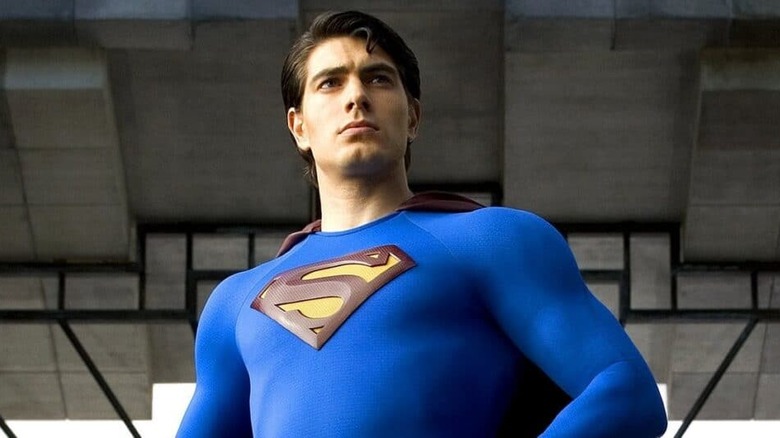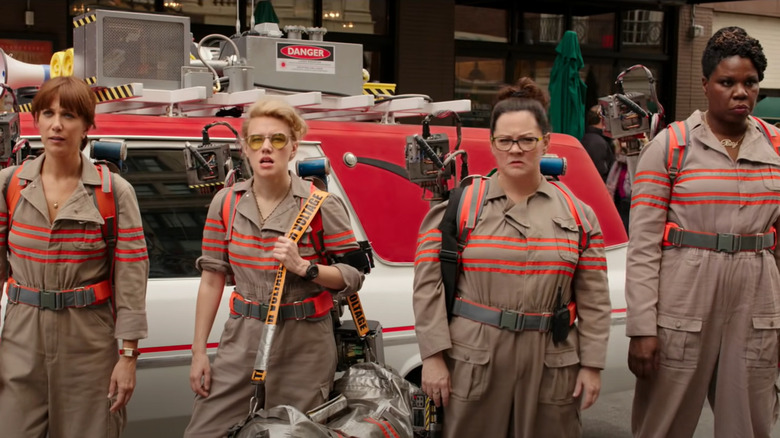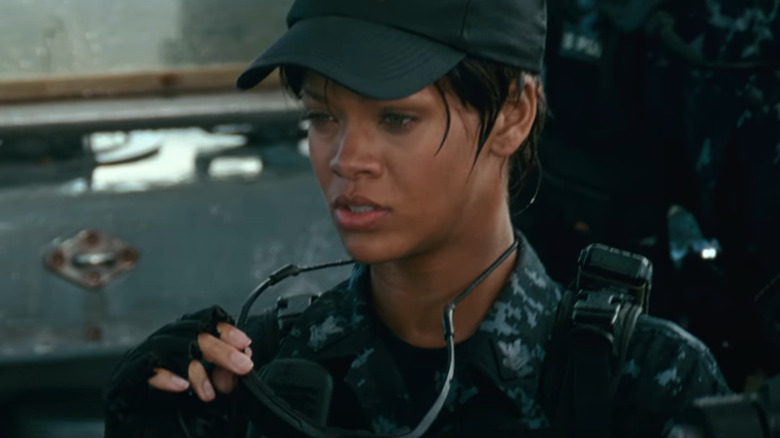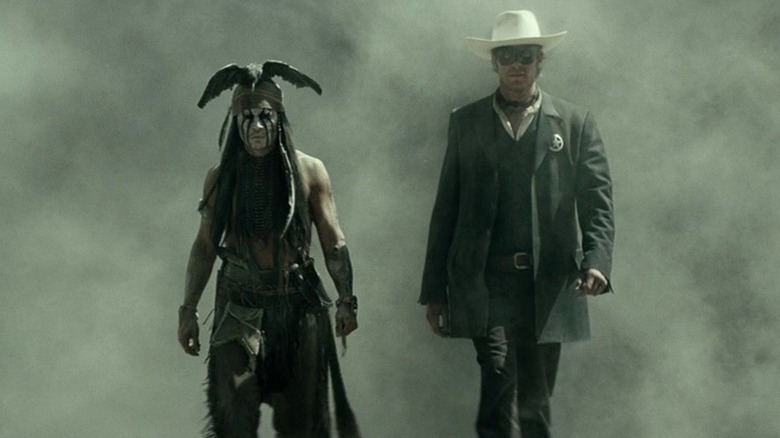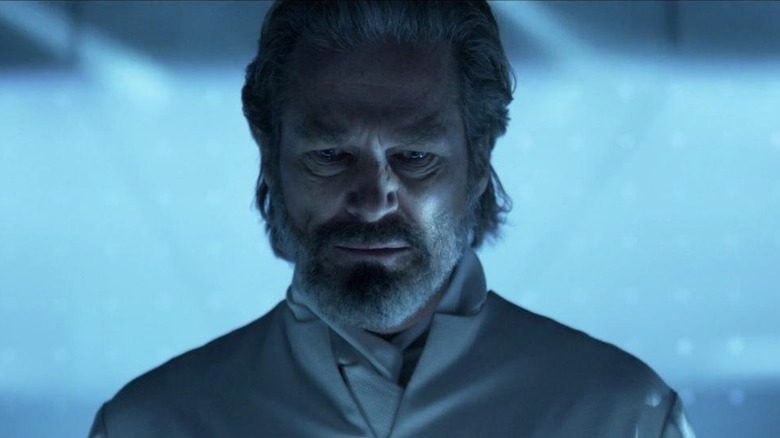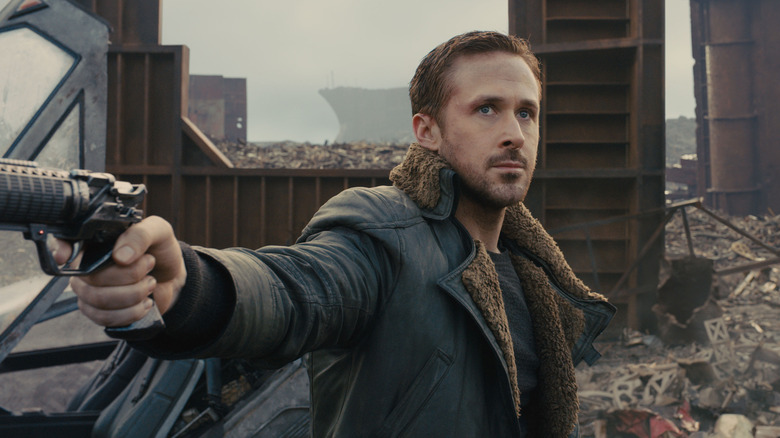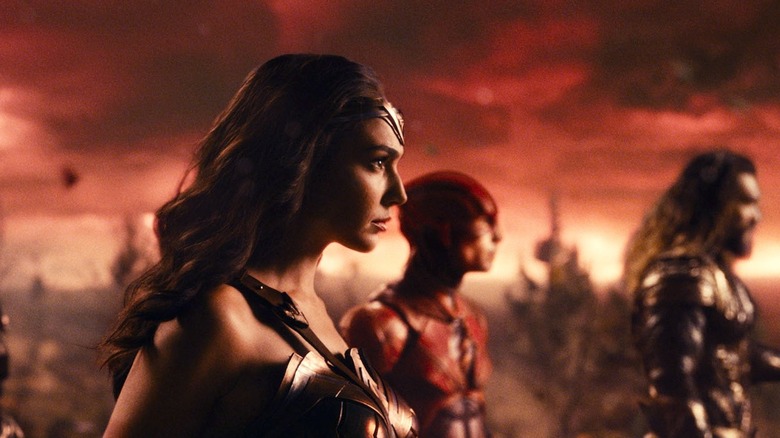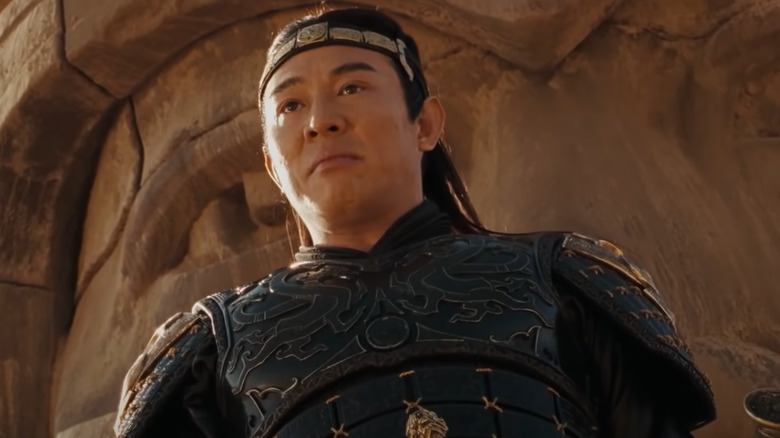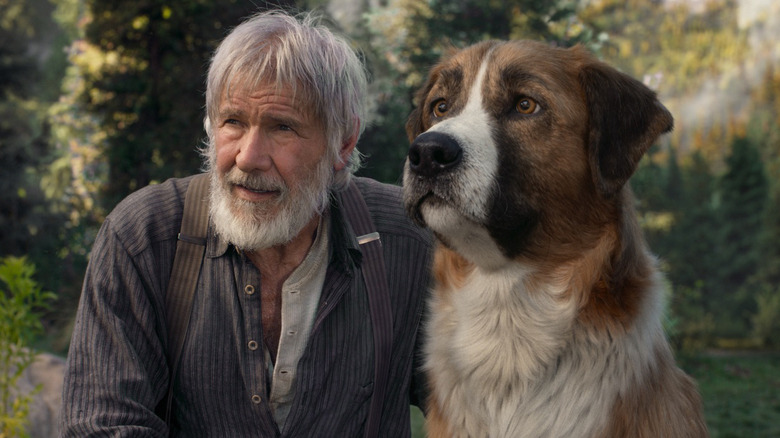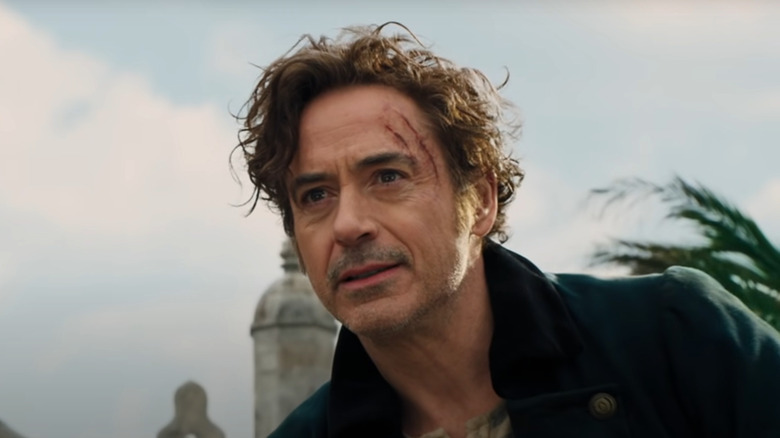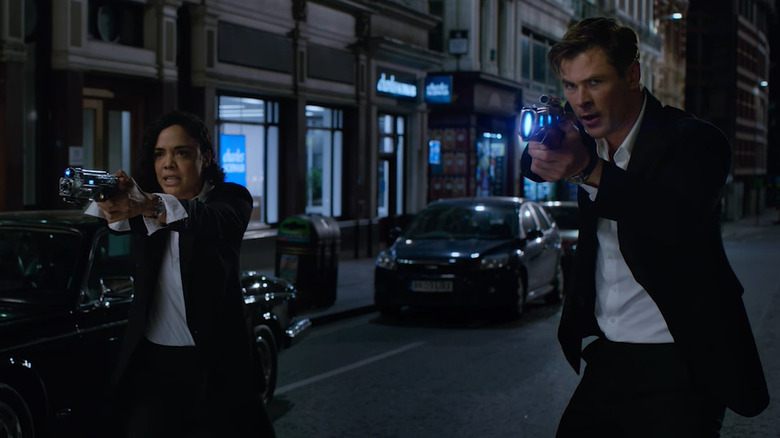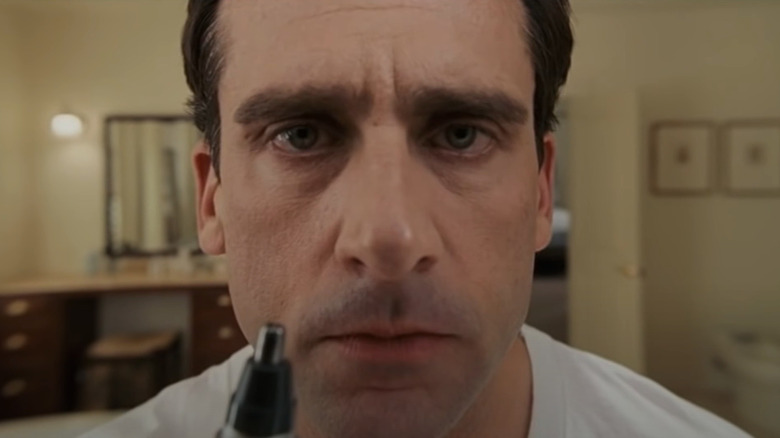Movies That Could Have Been Big, But They Spent Too Much Money
"Blockbuster" and "bomb" are the most overused words in the box office lexicon. Like any business, what matters is "profitable" or "not profitable." Doesn't quite have the same ring to it, does it? What makes a movie profitable is the same thing that makes a car, computer, vacuum cleaner, or street taco truck profitable — it makes more money than it costs. The rule-of-thumb says a movie must make twice its production budget to cover marketing costs and turn a profit, which is why "Batman Begins" got sequels after opening poorly and "Hellboy II: The Golden Army" didn't after opening strong. It's also why "Joker" was about as profitable as "Avengers: Endgame," despite the DC film's $1 billion worldwide earning about one-third of what "Endgame" made.
Unfortunately, as was the case with "Hellboy II," some movies cost so much that their box office can't make up for the losses. Sure, they might've raked in a ton of cash, but they didn't make much of a profit, making them financial failures. What's extra sad is that based on their worldwide numbers, these movies coulda' been contenders if their respective studios kept their budgets (and expectations) in check. After all, not every movie is going to make "Star Wars" or Marvel billions — heck, not even those franchises are invincible — so why should their budgets be similar? Find out which studios learned that lesson the hard way with movies that could've been big, but they spent too much money!
Ghostbusters: Answer the Call
Sony (which bought Columbia Pictures in 1989) has been trying to turn "Ghostbusters" into a franchise for three decades. Not every classic warrants sequels, but that's another topic. All we'll say is that Sony should've kept their expectations in check. The original "Ghostbusters" made $295 million worldwide in 1984, about $789 million worldwide in today's dollars. Five years later, "Ghostbusters II" made $215 million worldwide, over $480 million worldwide today. So when Sony finally made a new "Ghostbusters" after the series spent nearly 30 years in development hell, they had to wonder, would "Ghostbusters 3" earn its predecessors' inflation-adjusted numbers and land between $500 million and $800 million? Or would it hit their unadjusted inflation numbers, landing around $250 million?
Sony felt bullish and spent $144 million betting on the former. Yeah, about that. The big problem was 2016's "Ghostbusters: Answer the Call" wasn't a sequel featuring characters we knew and loved but a reboot/remake with a whole new cast. That typically doesn't work out, and "Answer the Call" was no exception. The film finished with $229 million worldwide — not bad for a comedy in modern Hollywood and in between what "Ghostbusters II" and "Ghostbusters" made unadjusted for inflation. Still, it didn't double the budget, so instead of a sequel to the reboot, we got a legacy sequel to the original with "Ghostbusters: Afterlife," which has actually made less than "Answer the Call" but at half the cost.
Battleship
"Battleship" is considered one of the biggest box office bombs of the past decade, and not even "The Navy" (not the branch of the military but Rihanna's fans) would argue that. But it's not for the reason you might think. "Battleship" wasn't a bomb because it didn't make money; it bombed because it didn't make enough money. "Battleship" scored $313 million worldwide in 2012, not bad for a semi-original sci-fi film not based on a popular property (a board game ... really, Universal?) that didn't star any proven above-the-title draws, except for Liam Neeson in a "I'm only here for the paycheck" supporting role and whose forte is more "old man seeking revenge" action flicks. Oh, it was also insanely bad.
And yet it still made $313 million worldwide, mostly due to its $248 million international gross. Alas, "Battleship" sunk thanks to "The Avengers," which had opened a bit earlier, earned millions, and made box office history in the process. Speaking of "The Avengers," it cost $225 million, only about $5 million more than "Battleship's" $220 million. Yep, Universal almost spent the same amount on friggin' "Battleship" as Marvel did on "The Avengers." According to The New Yorker, "Battleship" was greenlit with a $150 million budget (and it would've made money), but after a troubled production, then-chairman Adam Fogelson figured it was better to spend more to salvage the film than cancel it. We saw how that worked out.
Superman Returns
Just because a character is a household name doesn't mean he's a box office draw. Thus, while Superman is probably the most famous superhero of all time, he's not the most bankable at the box office, as the "S" hasn't meant "$" since the early 1980s. Not counting inflation, the 10 "Superman" movies have made $2.5 billion worldwide. The three "Iron Man" movies have made $2.4 billion, not including Tony Stark's other Marvel appearances.
In 1978, "Superman: The Movie" made moviegoers believe a man could fly and made a lot of money doing it, earning $300 million worldwide, about $1.2 billion today, mighty impressive for the Man of Steel. However, the franchise died a horrible death with "Superman IV: The Quest For Peace" in 1989 ($36 million worldwide), and various reboots stayed in development hell for the next decade and half.
The money spent on a decade-plus of would-be "Superman" movies that never were was tacked on to the "Superman" movie that finally was — 2006's "Superman Returns." At $232 million, "Superman Returns" cost a lot more than other superhero origin stories at the time, like "Spider-Man" ($139 million) and "Batman Begins" ($150 million). However, it was technically a vague sequel to the first two Christopher Reeve movies, something never specified in the marketing, creating confusion and apathy. Given all of that, "Superman Returns" earning $391 million worldwide wasn't that bad. With "Spider-Man" or "Batman Begins" budgets, it would've made money.
The Lone Ranger
Okay, hear us out on this one — is making a modern-day, big-budget action movie based on an old radio series and TV show any stranger than doing the same with a theme park ride? Normally, we'd say not, but "The Lone Ranger" and "Pirates of the Caribbean" prove the exception to the rule. By 2012, the "Pirates of the Caribbean" franchise had earned about $3.5 billion across four films. Pride comes before the fall, so Disney, Johnny Depp, director Gore Verbinski, and producer Jerry Bruckheimer thought their relationship was a license to print gold and could do no wrong. But "The Lone Ranger" went wrong. Very, very wrong.
In Disney's defense, they realized the film's budget was getting out of control and even shut down production to contain it. Sources vary, with the final tally between $225 million and $250 million. Wherever it landed, "The Lone Ranger" would've had to break records to break even. For context, "The Lone Ranger" cost about $100 million more than "Curse of the Black Pearl" and the same as "Dead Man's Chest," despite not being a sequel and starring a relative unknown (and career box office poison), Armie Hammer, in the title role. With $260 million worldwide though, "The Lone Ranger" franchise might've lived long enough to ride again. But with those costs, making a "Lone Ranger 2" would've been like beating a dead horse.
Tron: Legacy
Thanks to "Star Wars," Marvel, Pixar, and Disney +, it may seem like Mickey is a mighty mouse and the house that Walt built is indestructible. This conveniently ignores the fact that outside of the above-mentioned properties, Disney's live-action output has mostly been a wasteland of box office bombs, including some of the biggest disappointments of all time. In fact, Disney's desperation for live-action movies is probably why they purchased Marvel and Lucasfilm in the first place.
One Disney film that did so-so, and would've been a big hit if not for the even bigger budget, was "Tron: Legacy." This was always a bit of a head-scratcher. "Tron" bombed in 1982, and while it built a cult following, making a legacy sequel 28 years later to a movie nobody saw in theaters is kinda bonkers. Couple that with the $200 million price tag and you'd have to wonder whether Mickey lost his marbles. Smartly, Disney positioned "Tron: Legacy" as the must-see holiday blockbuster of 2010, and it mostly worked, as the film earned $399 million worldwide — pretty impressive considering its background. Had Disney spent even $150 million instead, we'd have gotten a follow-up much sooner.
Blade Runner 2049
The sweet spot between sequels is two to four years. But if your first movie tanked yet still managed to find a cult following, then making a sequel decades later makes sense, right? Right? Yeah, we're still waiting on evidence for that one. It's certainly not the case with the "Blade Runner" franchise. The original only earned $39 million worldwide on a $28 million budget. Still, it's "Blade Runner," a movie that in the decades since its 1982 release has been heralded as a masterpiece (depending on which of its 11,056 versions you consider the best). Surely that counts for something, yeah?
Maybe among cineastes but not among mainstream moviegoers. Over 30 years after the original drew raves from critics and flies from moviegoers, Warner Brothers spent a blockbuster budget of $185 million on "Blade Runner 2049." How'd that turn out? About how you'd expect, unless you're a Hollywood exec. With $258 million worldwide, the sequel far exceeded the original's inflation-adjusted gross (about $112 million) but didn't come close to earning back its budget. We can argue all day whether Deckard was a replicant, but there's no debate on this — "Blade Runner" should not have been replicated at $185 million.
Justice League
What do you do when your movie's in production, isn't working, and you've already spent a ton of money on it? Option A is finishing the film and hoping for the best. Option B is dropping another several million in the hopes of fixing it. Warner Brothers opted for Option B with "Justice League," and the result was a mixed bag at the box office. Before writing a $25 million check for pricey reshoots, WB had already spent $275 million on the film, about the same as what they spent on "Batman v Superman," which made $872 million worldwide in 2016.
Big numbers, except this was a Batman, Superman, and Wonder Woman appearing in the same movie for the first time ever, and it still made less than an "Iron Man" movie. For the follow-up, "Justice League," WB got skittish, undermined director Zack Snyder, and brought on "Avengers" director Joss Whedon to helm reshoots after a tragedy in Snyder's personal life. With the reshoots, "Justice League" now cost $300 million, about $75 million more than "The Avengers." What did WB get for it? A sub-$100 million opening and a $655 worldwide gross ... for a "Justice League" movie! Though it made a small profit, "Justice League" was more of a train wreck than a tentpole.
The Mummy: Tomb of the Dragon Emperor
Conventional wisdom says "The Mummy" franchise was going strong until "The Mummy: Tomb of the Dragon Emperor" bombed. As with most things, the conventional wisdom isn't wrong, it's just missing part of the story. Yes, "Tomb of the Dragon Emperor" was also really, really bad, even for a franchise that never got much love from critics. However, the franchise that turned a classic Boris Karloff horror property into a Brendan Fraser- and Dwayne Johnson-starring action franchise made money with every movie.
"The Mummy" made $416 million worldwide on a $80 million budget in 1999, while "The Mummy Returns" earned $435 million on a $98 million budget in 2001. Meanwhile, "The Mummy: Tomb of the Dragon Emperor" earned $405 million worldwide in 2008, comparable to the other two ... but with a $175 million price tag. Don't blame inflation either, as the average cost of the first two "Mummy" movies ($89 million) would've been $115 million by 2008. "Dragon Emperor" simply cost too much. In fact, it was enough to make King Tut jealous and almost as much as the first two movies combined. So even though "Dragon Emperor" made a little money, its high cost and horrible quality killed the franchise deader than Imhotep.
The Call of the Wild
Harrison Ford is one of the 10 highest-grossing movie stars of all time, with career earnings of $5.2 billion domestically and $10 billion worldwide — and those figures are unadjusted for inflation. You can crunch the numbers, but when you adjust his career earnings for inflation, we figure Ford is #1 by 18 parsecs. However, outside of "Indiana Jones and the Kingdom of the Crystal Skull" and "Star Wars: The Force Awakens" (which admittedly were huge hits marketed around him), Ford hasn't had an above-the-title hit since 2000's "What Lies Beneath." That should have changed in 2020 with "The Call of the Wild." Key word: should.
"The Call of the Wild" made $62 million domestically and $107 million worldwide, fairly modest, but it opened with a strong and surprising $24 million, landing neck and neck with "Sonic the Hedgehog" and holding strong for a few weeks. A Jack London adaptation was never going to be a big international hit ... so why did 20th Century Fox spend $125 million on it? Blame "budget-itis," a term for Hollywood's inexplicable inability to make mid-budget movies. While Ford's salary could possibly be a big contributor, most blame belongs to Buck the CGI-dog, which turned what could have been a modest hit into a $50 million loser.
Dolittle
Some box office observers argue that Robert Downey Jr. isn't a movie star outside his signature Tony Stark role. While there's no denying most of his $15.7 billion worldwide career earnings come from playing the man in the iron suit, he has proven to be a reliable draw in "Tropic Thunder," "Due Date," and the "Sherlock Holmes" movies. No, his "butts-in-seats" bankability isn't on par with Leonardo DiCaprio or Dwayne Johnson, but no other movie stars have that drawing power either. It seemed like Downey Jr. would add to his bankable resume with 2020's "Dolittle," but instead, that movie turned out to be a titanic turkey ... and not a talking one either.
Yet a look at the numbers shows a deeper story. "Dolittle" made $251 million worldwide, in the same ballpark as the Eddie Murphy "Doctor Dolittle" movies (unadjusted for inflation) and about on par with other live-action kids' movies released in the past 15 years, as the sub-genre has been dominated for more than a decade by animation. However, somebody at Universal thought it was a good idea to spend $175 million on "Dolittle," which is actually more than "Iron Man 2." Expecting Downey Jr. to pull MCU numbers in a non-Iron Man role was dumb, though his star power was enough to save "Dolittle" from utter destruction.
Men in Black: International
Making a sequel without original cast members is a bad idea. Turns out moviegoers don't just like a concept — they like the stars in sequels. Especially when that concept is "secret agents who monitor extraterrestrial activity" and those stars are Tommy Lee Jones and Will Smith. Sure enough, the three "MIB" films starring Mr. Jones and Mr. Smith made $1.6 billion worldwide, very impressive numbers, especially when you consider "Men in Black" was a risky sci-fi comedy based on an obscure comic book.
However, Jones and Smith were over it after three films (one suspects Jones was over it after one), but Sony wasn't. So they figured, "Hey, people liked Chris Hemsworth and Tessa Thompson in 'Thor: Ragnarok,' let's cast them in this!" Yeah, people like Hemsworth and Thompson as Thor and Valkyrie, but nobody saw them as the second coming of Spencer Tracy and Katherine Hepburn — or in this case, Will Smith and Tommy Lee Jones. Sony wisely spent a modest $110 million on the movie, so "Men In Black: International" made a narrow profit with $253 million. Sony didn't relaunch the franchise, but they dodged a bullet from a Noisy Cricket.
Evan Almighty
Comedies hit or miss at the box office, as humor doesn't always translate overseas. What's a movie studio to do? Spend most of its money on the movie star and hope he can put butts in seats in America. You don't spend millions on pricey VFX like you're making a Marvel movie. Unless you're Universal, that is. "Bruce Almighty," with Jim Carrey's mug plastered on the poster, made $484 million on a $81 million budget in 2003, making it not only Carrey's biggest hit (yes, even bigger than "Batman Forever" and "How the Grinch Stole Christmas") but one of the highest-grossing comedies ever.
But "Bruce Almighty" worked because of the "Jim Carrey as God" concept, not the brand. There was no indication audiences would show up to "Steve Carell as Noah" just because Universal slapped "Almighty" on it. Welp, Universal felt otherwise and spent $175 million on the film, more than twice "Bruce's" budget and the most expensive comedy of all time at the time. Admittedly, Universal originally set the budget at a more reasonable, though still too-high, $140 million, but costs ran up thanks to CGI and live animals. "Evan Almighty" would have needed to make $350 million just to break even ... and it didn't. Its $174 million worldwide wasn't bad for a comedy sequel not starring the original actor but a disaster of Biblical proportions based on the budget.
